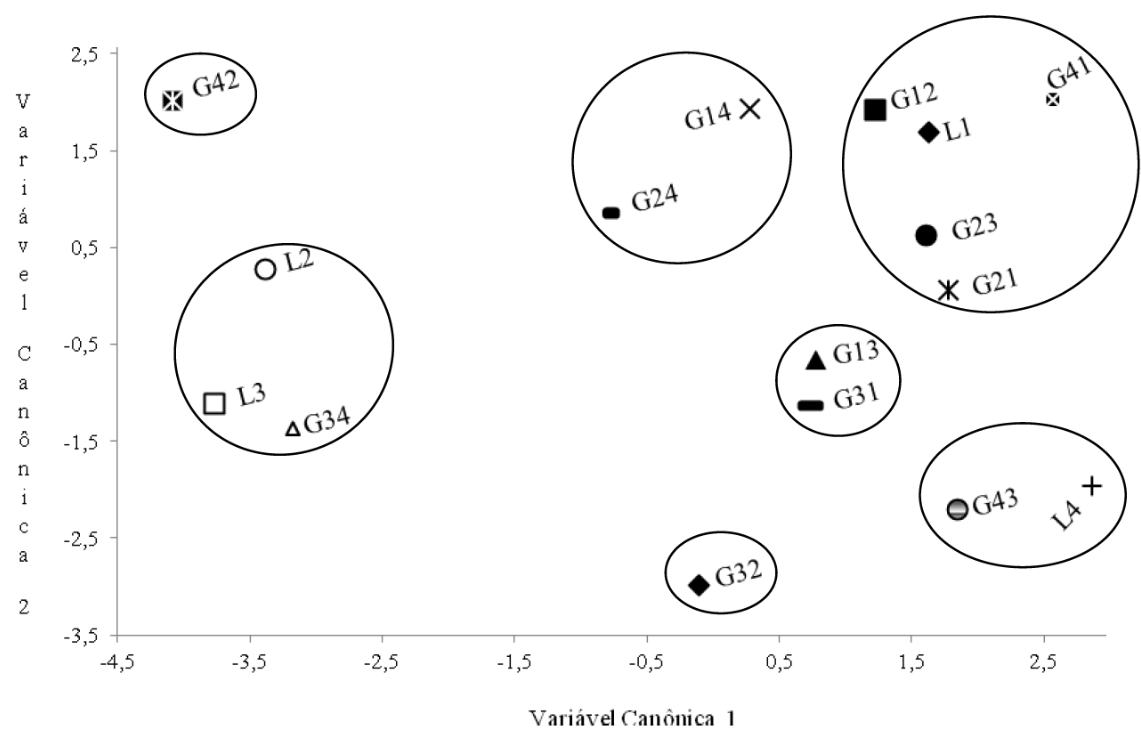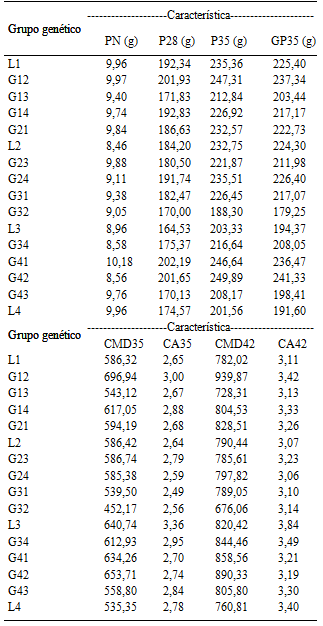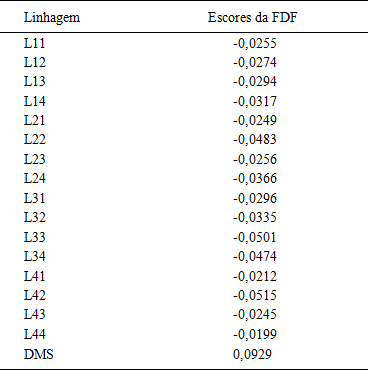The objective was to evaluate the genetic divergence between lineages of quail and their crosses to the performance characteristics through multivariate analysis. Four lines of quails were used in a complete diallel system, provided training to 16 groups of progenies, four parental pure: L1, L2, L3 and L4; six genetic groups crossbred F1: G12, G13, G14, G23, G24 and G34; and six reciprocal F1 crossbred genetic groups. The variables were evaluated: mean body weight at birth, at 28, at 35 and 42 days of age; the average consumption of diet from birth to 35 and 42 days of age; feed conversion birth at 35 and 42 days of age; and the weight gain from birth to 35 and 42 days of age. The performance of genetic groups was assessed by multivariate analysis of variance and the first canonical variable, using the tests of the largest eigenvalue of Roy and Roy union-intersection for multiple comparisons. The study of genetic diversity was done by canonical variate analysis and by the optimization method of Tocher. The first three canonical variables explained 88.82% of the genetic variation between groups. The genetic divergence between the analyzed genetic groups allowed the formation of four groups: 1 - L1, G12, G23, G21 and G41; 2 - G13 and G31; 3 - L4 and G43; 4 - G32; 5 - G14 and G24; 6 - G42 and 7 - L2, L3, identifing L4 G34 as the lineage that most influenced the formation of new groups.
canonical variable; discriminant analysis; group.

 Thumbnail
Thumbnail


